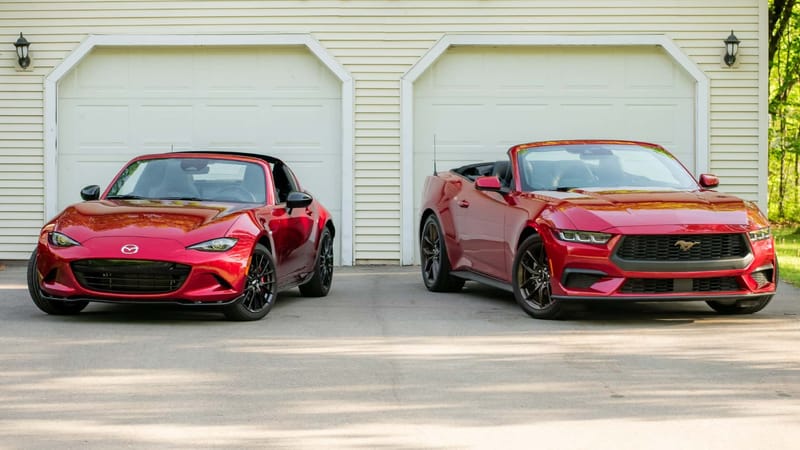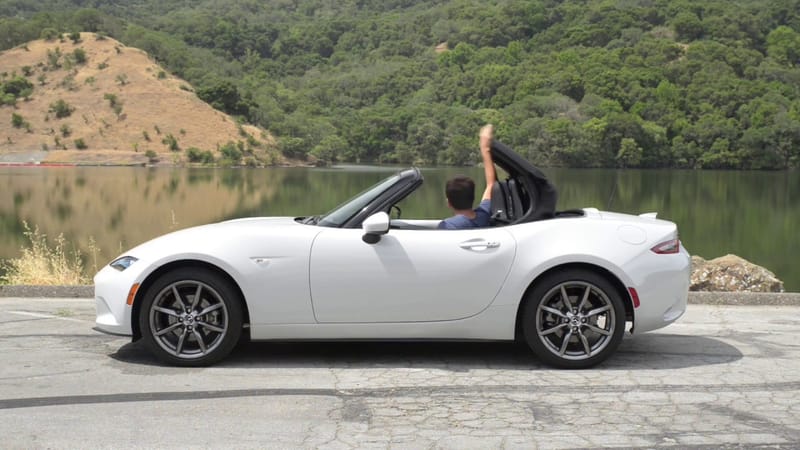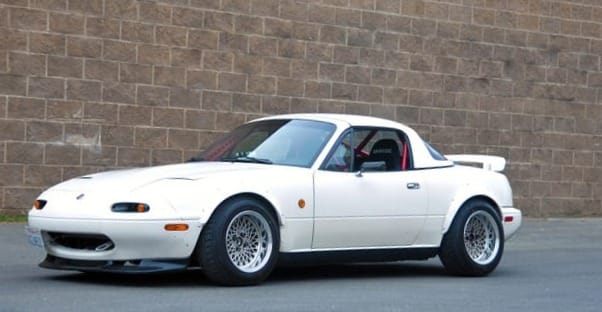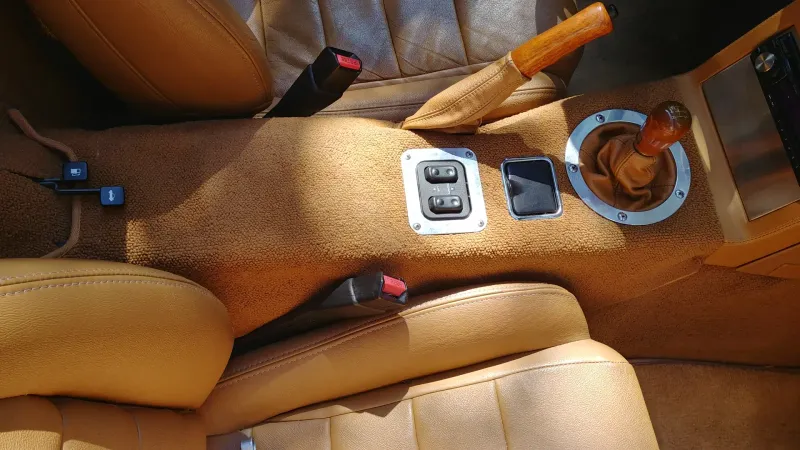Auto vs. Manual Miatas: Which One is Right for You?
While purists favor the manual for control and engagement, the automatic offers convenience for daily use. This guide breaks down performance, fuel economy, and driving experience to help you choose the best option.
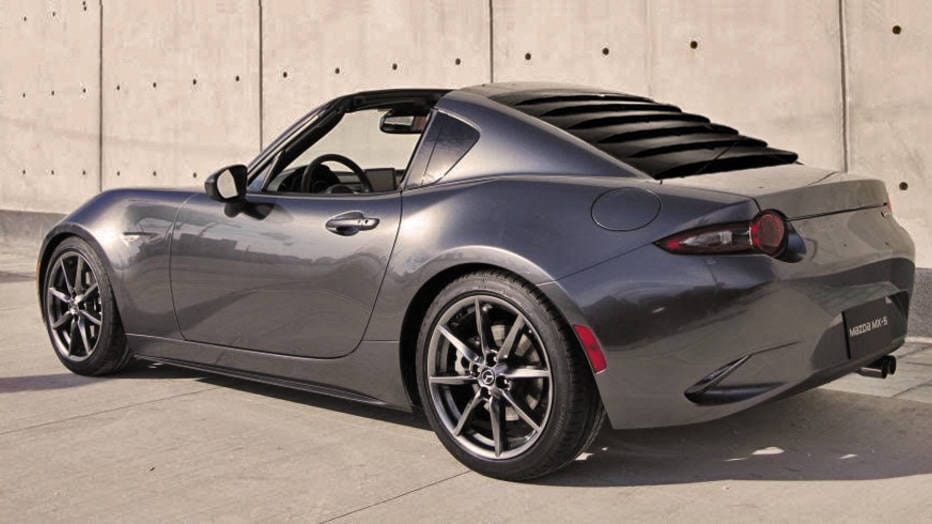
The Mazda Miata (also known as the MX-5) has earned its legendary reputation for being a lightweight, rear-wheel-drive sports car that’s not only affordable and reliable but also incredibly fun to drive. Among Miata enthusiasts, one of the biggest debates is whether to go for the automatic or manual transmission. Some purists insist that a “real sports car” should always have a manual, while others are completely fine with the convenience of an automatic. In this article, we’ll unpack the key differences between the two, covering performance, driving experience, fuel economy, daily usability, and why the manual still reigns supreme for many die-hard fans.
Pros, Cons, and Myth-Busting for the Automatic Miata
Let’s address the elephant in the room: the idea that an automatic Miata isn’t a “true” sports car. In reality, it still shares the same DNA as the manual version. The automatic Miata can be a good fit for people who want a stress-free driving experience in heavy traffic, those with physical limitations, or anyone who just loves the Miata’s style but doesn’t necessarily crave constant shifting. While it won’t deliver that pure, connected feel you get from a manual, it’s still undeniably a Miata with all the perks of a lightweight, rear-wheel-drive platform.
Performance
Engine & Power Output
Regardless of which transmission you choose, every new Miata features the same 2.0L Skyactiv-G inline-four engine, pushing out 181 horsepower and 151 lb-ft of torque. That means you’re getting the same raw power no matter what, but the way this power is delivered feels different between the manual and the automatic.
Transmission Differences
The manual Miata employs a six-speed manual transmission that provides a direct, mechanical link between you and the car. Shifts are short, precise, and incredibly satisfying once you get the hang of rev-matching and timing. The manual is also lighter, which benefits acceleration and handling.

By contrast, the six-speed automatic version includes paddle shifters, offering a pseudo-manual experience minus the clutch. It’s more convenient for stop-and-go traffic and can give you a slight fuel economy edge on highways, but it’s heavier, slightly less responsive, and typically more expensive to repair over the long haul.
Fuel Economy Comparison
In terms of gas mileage, the manual Miata averages around 26 MPG in the city and 34 MPG on the highway, whereas the automatic can give you 26 MPG in the city and about 35 MPG on the highway. The difference is marginal, but the automatic does eke out a small advantage on the open road, thanks to optimized gear ratios.
Driving Experience
Handling & Steering Feel
Miatas are legendary for their nimble handling, lightweight build, and rear-wheel-drive dynamics. The manual version amplifies this sense of connection, giving you total control over power delivery when you’re tackling corners or blasting down a twisty back road. An automatic Miata, while still fun, can lack that direct, raw feel, making it slightly less thrilling for the driver who loves active involvement.

Acceleration & Shift Feel
The manual Miata typically feels quicker off the line because you can decide exactly when to shift to maximize torque. The automatic often has a slight delay, even when you use the paddle shifters. Compared to modern dual-clutch systems, the Miata’s automatic isn’t as fast or crisp, so some drivers find it “laggy” in aggressive driving scenarios.
Daily Driving & Comfort
When it comes to daily driving, the manual Miata is plenty of fun but can be tiring if you’re stuck in a major city with endless stop-and-go traffic. It also demands more skill, particularly rev-matching for smooth downshifts. The automatic, on the other hand, is a breeze to drive in urban settings and on long trips. It’s just less engaging and has slower response times for those moments when you want to really hammer it.
Rev Matching & Shift Response
Manual Miata drivers learn (and usually love) rev-matching for silky-smooth downshifts. The automatic will blip the throttle, but does it inconsistently and not as quickly. Many Miata enthusiasts claim the automatic transmission simply isn’t optimized for spirited driving, and that it feels like it was added primarily for convenience rather than performance.
Enthusiast Perspective: Why Manual Still Wins
In the eyes of many Miata lovers, the car was basically designed around the manual gearbox. It’s a lightweight, balanced sports car where the driver’s interaction with the mechanics of shifting is a big part of the fun. The automatic is often seen as an afterthought, great for broadening the Miata’s market appeal but not for delivering the purest expression of what makes a Miata special.
Manual Miatas also tend to hold their value better and are generally more sought after in the used market. Still, automatic owners defend their choice by pointing out that paddle shifters can be enjoyable in their own right, and they’d rather focus on steering and braking than dealing with a clutch. Ultimately, most fans agree the manual gives you the “classic Miata vibe,” but the automatic has its place for certain lifestyles and priorities.
When Does an Automatic Make Sense?
Despite all the praise for the manual, there are definitely situations where the automatic Miata shines. If you live in a region with never-ending traffic jams, commuting in a stick-shift car can be a real workout. Automatics are also more plentiful in some used car markets, especially for certain NC and ND models, and they might be in better shape if the previous owner didn’t push them hard on the track.
Physical limitations or injuries can also rule out the possibility of using a clutch, making the automatic your only avenue to experience that classic Miata fun. Plus, if you stumble onto a fantastic deal on an automatic Miata that’s been lovingly cared for, you might be willing to sacrifice a bit of that raw engagement for the right price.
Which One Should You Get?
Choose the Manual Miata if:
- You crave the most direct and engaging driving experience.
- You want to feel intimately connected to the car and road.
- You enjoy mastering the art of driving stick.
- You’d like potentially better resale value down the line.
Choose the Automatic Miata if:
- You deal with a lot of city traffic and want easier commuting.
- You prefer focusing on the road rather than constantly shifting.
- You have physical limitations that make manual shifting difficult.
- You found a great deal on a well-maintained automatic Miata and don’t mind a bit less involvement.
The manual transmission is the top pick for most Miata enthusiasts, offering an unfiltered sports car experience that amplifies everything the Miata is known for: lightweight fun, impressive handling, and an unbeatable sense of connection to the road. However, the automatic Miata is still very much a Miata, agile, stylish, and enjoyable, just with a slightly different flavor.
If you’re buying a Miata primarily to relish that classic, spirited, open-top driving experience, go manual. But if you mostly want a cool, comfortable ride that won’t wear you out in traffic (and you’re okay with a pinch less excitement), the automatic can still serve you well. Either way, the Miata remains a blast, no matter which pedal setup you choose.

